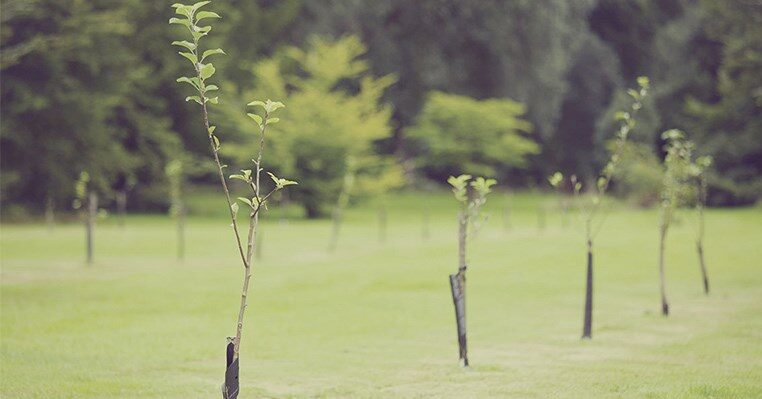Global warming is an urgent problem. Everyone knows that. However, it is not always easy to know how to reduce our CO2 emissions in order to fight against this threatening global warming. Many solutions are proposed: drive less, eat less meat, switch to renewable energies… And among the solutions often mentioned is reforestation.
The idea? Planting trees (which store carbon) to compensate for our CO2 emissions. For example, a few months ago, India launched a major reforestation operation and planted 66 million trees throughout the country.
But in fact, is all this really useful? Does it really have an impact? Could we each decide to plant trees to compensate for our emissions? And how many trees should we plant to compensate for our CO2 emissions?
How many trees would we need to plant to offset our carbon footprint?
Knowing this, it is easy to estimate the number of trees we should plant to compensate for the pollution we generate. The most recent estimates consider that each year a human emits between 10.6 and 12.8 tons of CO2.
If we consider that a tree stores 35 kg of CO2 per year (which is a rather high range), then to compensate for the annual pollution of a single person, we would have to plant nearly 360 trees. In other words, every day, a French person emits about as much CO2 as a tree stores in a year.
And this approximation does not take into account many factors such as the pollution generated by such planting, the problem of competition in land use, or the impact on biodiversity of a massive planting of trees on large areas.
How much carbon does the average person emit per year?
This varies greatly depending on one’s standard of living, the mode of travel you use, whether or not you eat meat, and even the quality of insulation in your home (link to insulation). Well, as you will have understood, the three main categories from which the majority of CO₂ emissions come from are: housing, transportation, and food.
To give you an idea, on average, a Middle Easterner emits 30 tons of CO₂ per year. Americans above 15 tons and Europeans emit about 10 tons. The French are at “only” 6 tons per year due to the large nuclear park (whose pollution is not caused by CO₂). As for China, it has gone from 20% to 30% of the world’s CO₂ emissions in 10 years. A Chinese inhabitant emits an average of 5 tons of CO₂ per year. On the other hand, a Madagascan emits less than about 300 kg of carbon dioxide per year.
Prevention is better than cure
Although reforestation is undeniably one of the solutions to the problem, it could not solve the problem of climate change on its own.
Even if we covered the 9 million km2 of the Sahara with more than 1,000 trees per hectare we would barely manage to compensate for the 30 billion tons of CO₂ we emit in excess each year (as we just saw, this would require far too much tree space compared to the population density).
Currently, we are in a logic of repair or compensation where we should rather think prevention. It is not a question of questioning everything but of starting to change our consumption patterns little by little by reducing our carbon impact by subscribing to a renewable energy supplier, for example.
And on the other hand, by finding ways to offset our CO₂ emissions. For example, by participating in reforestation with Reforest’action. By reducing our CO₂ emissions on the activities that allow it and offsetting the others we can really have a beneficial action.








